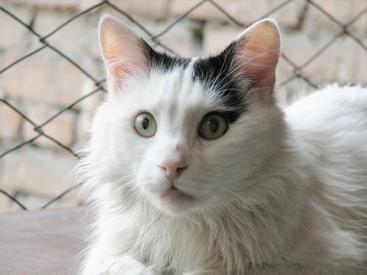
The Turkish Van originates from...
An ancient breed, the Turkish Van is thought to have been introduced to Europe with the return of the Crusaders in the 13th century. The Van has adopted many names over its existence, including the ‘Russian Longhair’ and the ‘White Ringtail,’ finally settling on ‘Turkish Van’ in the mid-1950s when it was brought to Britain by Sonia Halliday and Laura Lushington. This name comes from the region of the cat’s discovery — Lake Van, in the mountains of eastern Anatolia, Turkey. The cat existed here for centuries without being recognised by the western world. The Turkish Van was eventually introduced to Great Britain in 1955 although global numbers remain low, despite efforts being made to preserve the breed. In native Turkey, the Van is considered a national treasure and is highly revered throughout its homeland. It was officially recognised by the International Cat Association in 1979.
The Turkish Van is characterised by...
A relatively large and robust breed of cat, the Turkish Van is a keen hunter and climber, and is very distinctive in appearance and structure. Boasting a long body, nimble legs (the hind being slightly longer than the front), a wedge-shaped head, and striking eyes, the Van is handsome and highly sought as a domestic cat. It is common to observe the cat with odd-coloured eyes, usually one blue and one amber. The coat is semi long haired and the tail is plush and plumed. Colour pointing is usual in the Turkish Van, with colour being seen on the head and tail. Having been historically associated with the Lake Van region of Turkey, the cat has evolved as a capable and enthusiastic swimmer that will want to share your bathtub and will find endless fun in your garden pond. This characteristic is unusual for cats, who typically hate coming into contact with water.
The average Turkish Van...
While the Van is described by enthusiasts and breeders as an affectionate and mild-mannered cat, it is not demanding of attention and can be aloof with strangers. By no means a lap cat, the Turkish Van is highly active, acrobatic, intelligent, and needs both physical and mental enrichment to stay occupied and stimulated. Typically, the Van is both a friendly and affectionate cat towards its people and forms strong attachments to a special few. Larger than most breeds, a Turkish Van can weigh between 12-16 pounds depending on its gender, with a typical life expectancy of 12-15 years.
Weaknesses...
This breed is rare, so determining any genetic or breed-specific health complaints is difficult. Generally speaking, the Van is a very healthy and resilient breed with few health conditions documented, however deafness can occur in cats with two blue eyes. The Van is also prone to easy weight gain, so try to maintain a healthy and balanced diet, avoiding scraps of human foods or too many commercial cat treats.
Browse more breed facts and information or take a look at our range of cat food and digestive aid.
Do you own a Turkish Van? Let others know what they're like!
Related products
Advantage 80 Spot On Flea Control Large Cats and Rabbits
from £12.95
Advantage 40 Spot On Flea Control Cats, Small Dogs and Rabbits
from £12.95
Advantage 250 Spot On Flea Control Large Dog
from £12.95
Advantage 100 Spot On Flea Control Medium Dog
from £12.95
Drontal Tasty Bone Wormer Tablets for Small & Medium Dogs (2 to 20kg)
from £2.15
TermaWorm™ Tablets for Cats & Dogs
from £1.79
Drontal Tasty Bone XL Wormer Tablets for Large Dogs (Over 20kg)
from £6.39
Advantage 400 Spot On Flea Control Extra Large Dog
from £12.95